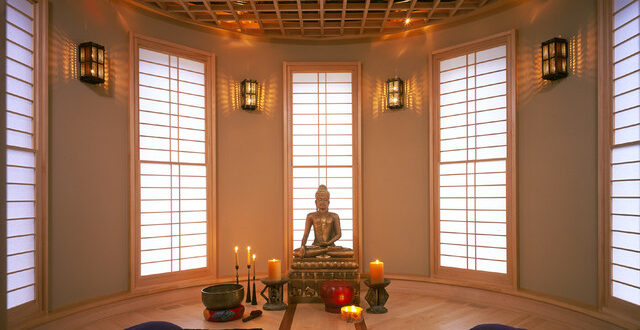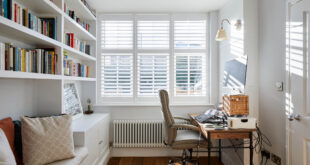Transforming Your Living Room into a Tranquil Meditation Space
In today’s fast-paced world, finding moments of peace and tranquility can feel like a luxury. The constant barrage of information, demands, and responsibilities often leaves us feeling stressed, overwhelmed, and disconnected from ourselves. Creating a dedicated meditation space in your home, particularly in your living room, can provide a much-needed sanctuary for relaxation, reflection, and inner peace. It’s about crafting an environment that promotes calmness, reduces distractions, and allows you to connect with your inner self.
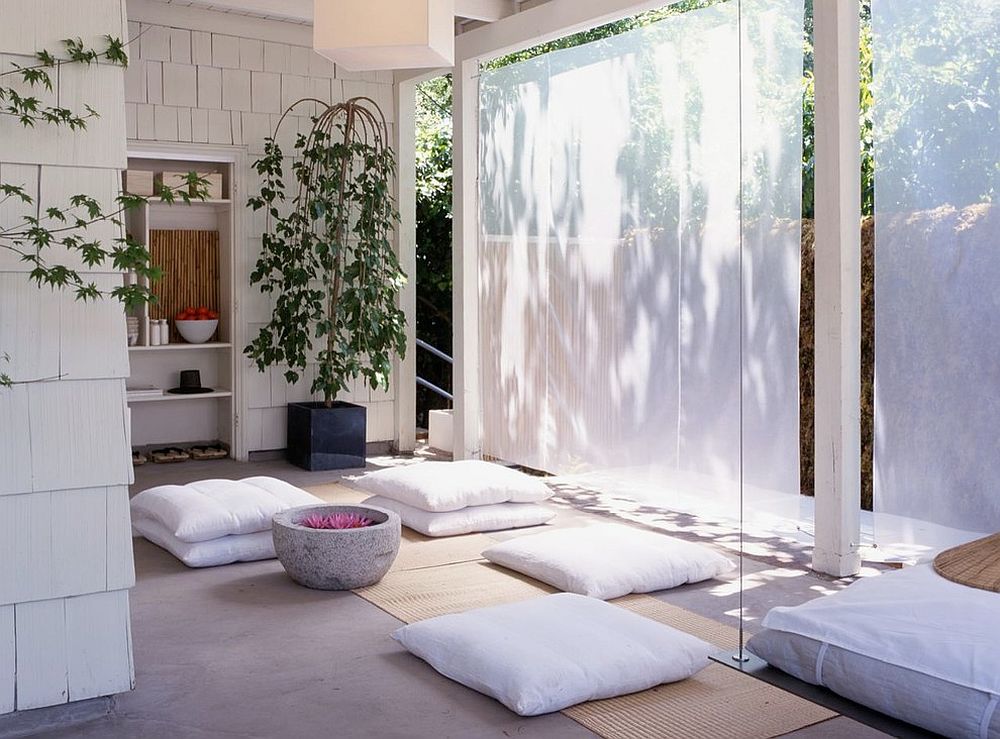
This isn’t about a complete overhaul or a massive renovation project. It’s about thoughtfully curating your existing space to facilitate a mindful practice. Whether you have a sprawling living room or a cozy nook, with a few strategic changes, you can transform it into a haven for meditation and relaxation. Let’s explore how you can achieve this, step-by-step.
Why Create a Meditation Space in Your Living Room?
You might be wondering, why the living room? Well, for many, the living room is the heart of the home. It’s often the largest, most comfortable, and most accessible space. Transforming it into a meditation area offers several benefits:
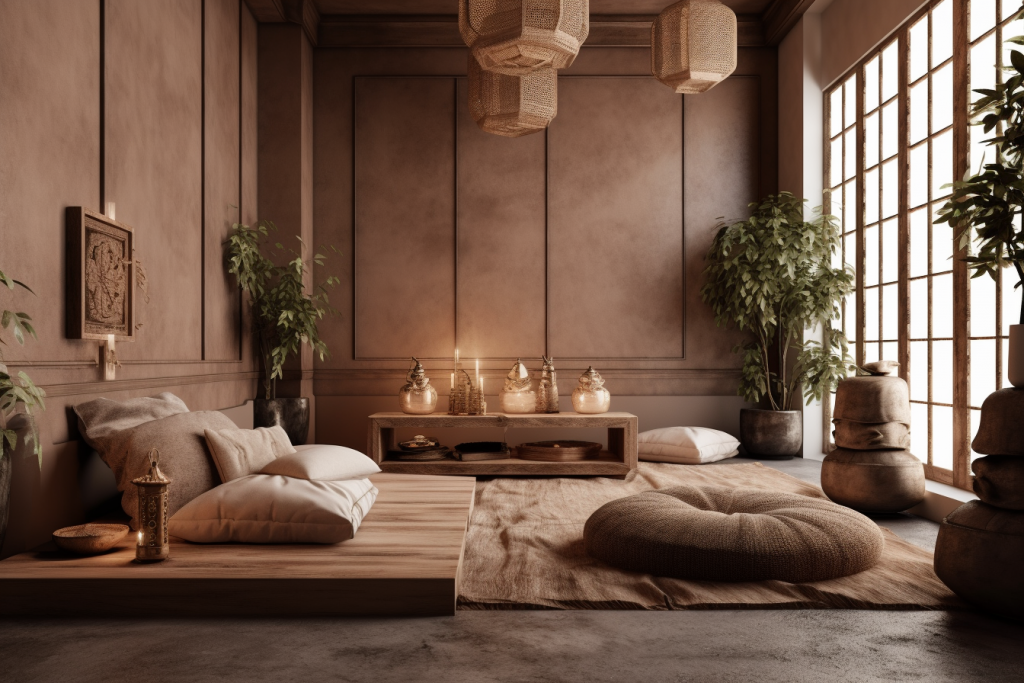
- Accessibility: Having a designated meditation spot in your living room makes it easier to incorporate mindfulness into your daily routine. No need to trek to a separate room – your sanctuary is right there, ready whenever you need it.
- Convenience: Let’s face it, sometimes we need a quick dose of calm amidst the chaos of family life. A living room meditation space allows for spontaneous moments of peace throughout the day.
- Multi-functionality: By integrating your meditation space into your living room, you’re not dedicating an entire room solely to meditation. This is particularly useful if you have limited space.
- Aesthetic Enhancement: A well-designed meditation space can actually enhance the overall aesthetic of your living room, creating a more calming and inviting atmosphere for everyone.
Step 1: Declutter and Simplify
The first and most crucial step is to declutter your living room. Clutter creates visual noise, which can be incredibly distracting and detrimental to your meditation practice. Think about it – a cluttered space often leads to a cluttered mind.
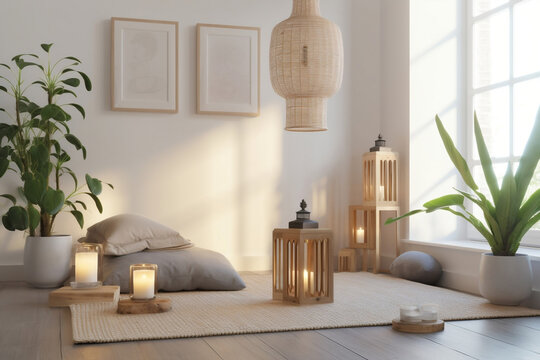
Start by removing anything that doesn’t serve a purpose or bring you joy. This might include old magazines, unused electronics, unnecessary furniture, and knick-knacks that you’ve accumulated over time. Be ruthless! Donate, sell, or discard items that are no longer needed.
Once you’ve decluttered, focus on organizing what remains. Find designated places for everything, so that your living room feels neat, tidy, and inviting. Consider investing in storage solutions like baskets, shelves, or ottomans with hidden compartments to keep clutter out of sight.
Remember, the goal is to create a minimalist environment that promotes a sense of calm and spaciousness. A clear space leads to a clearer mind.
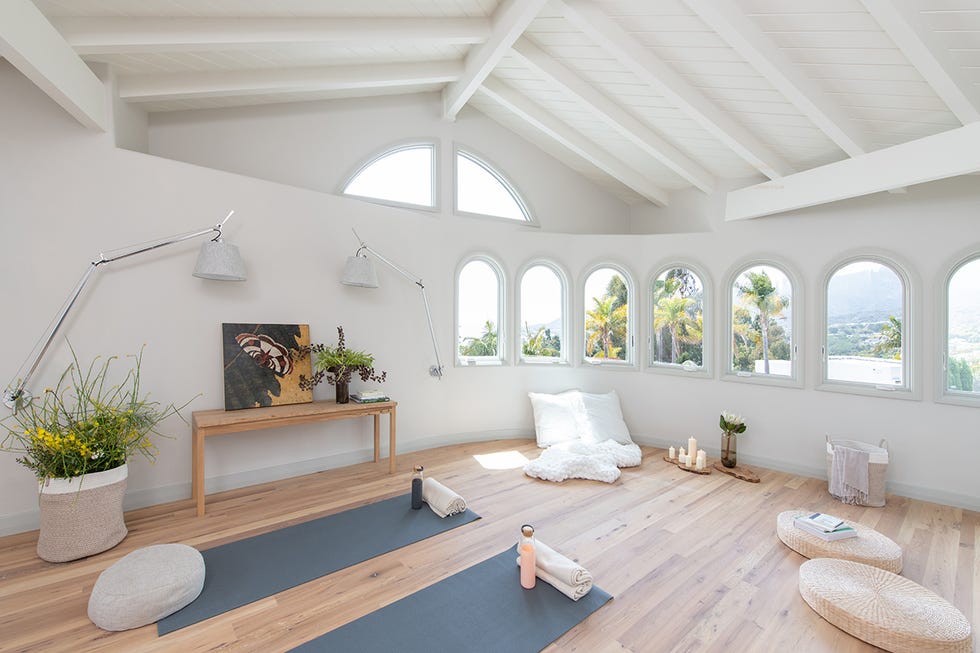
Step 2: Define Your Meditation Zone
Next, designate a specific area within your living room as your meditation zone. This doesn’t have to be a large area – even a small corner can suffice. The key is to create a distinct boundary between your meditation space and the rest of the living room.
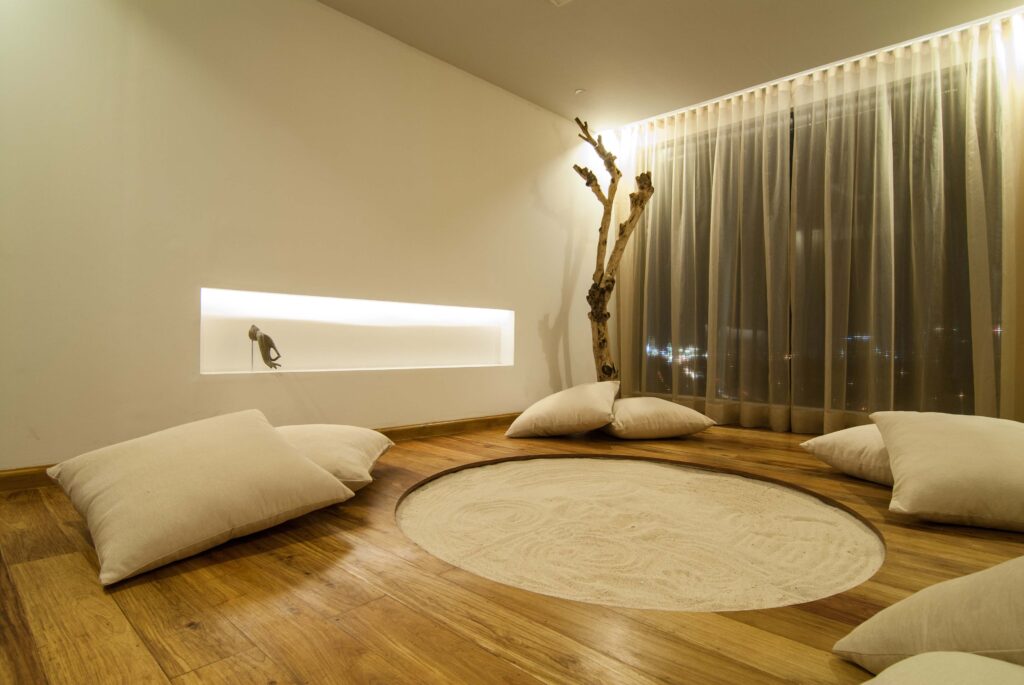
Consider using a rug, screen, or piece of furniture to visually separate your meditation area. A rug can define the space and add warmth and texture. A screen can provide privacy and block out distractions. A strategically placed bookshelf can create a sense of enclosure.
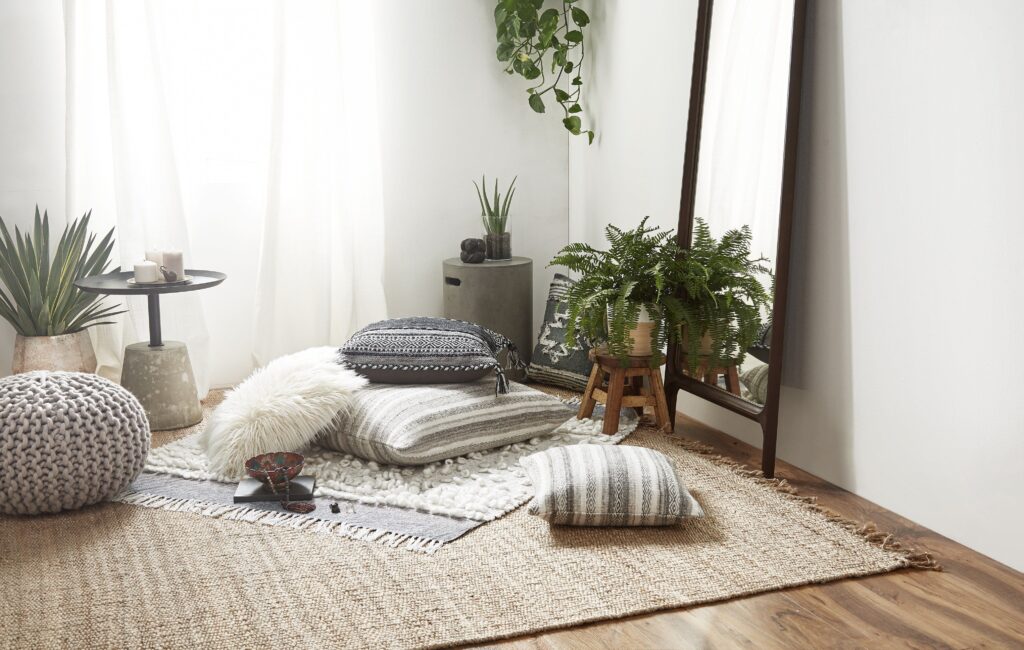
If possible, choose a spot that’s away from high-traffic areas and potential sources of noise. A corner near a window with natural light is ideal. However, if you’re sensitive to sunlight, you might prefer a more shaded area.
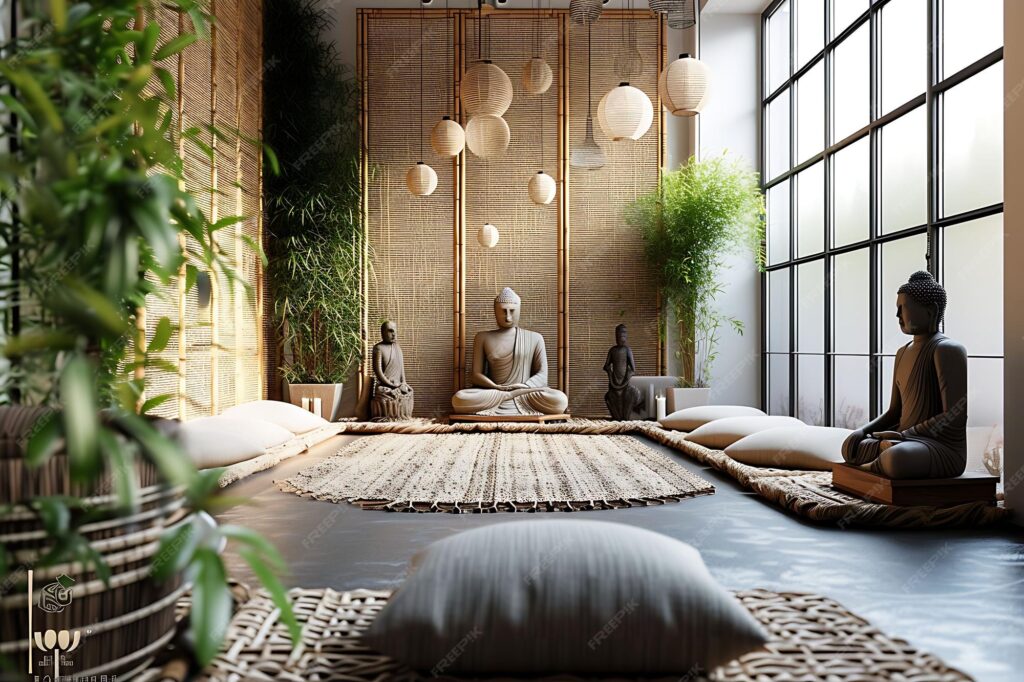
Once you’ve defined your meditation zone, make sure it’s easily accessible and inviting. This will encourage you to use it regularly.
Step 3: Choose Comfortable Seating
Comfort is essential for a successful meditation practice. Choose seating that supports your body and allows you to maintain a comfortable posture for extended periods. This could be a meditation cushion (zafu), a comfortable chair, or even a soft blanket on the floor.
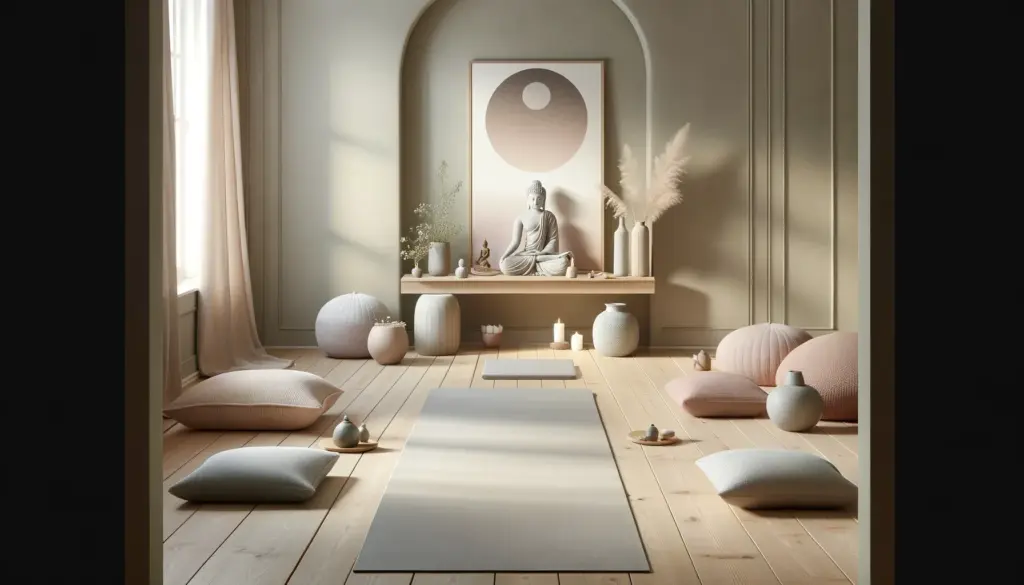
Experiment with different options to find what works best for you. Some people prefer to sit cross-legged on a cushion, while others prefer to sit upright in a chair with their feet flat on the floor. The most important thing is to choose a position that allows you to relax and focus without discomfort.
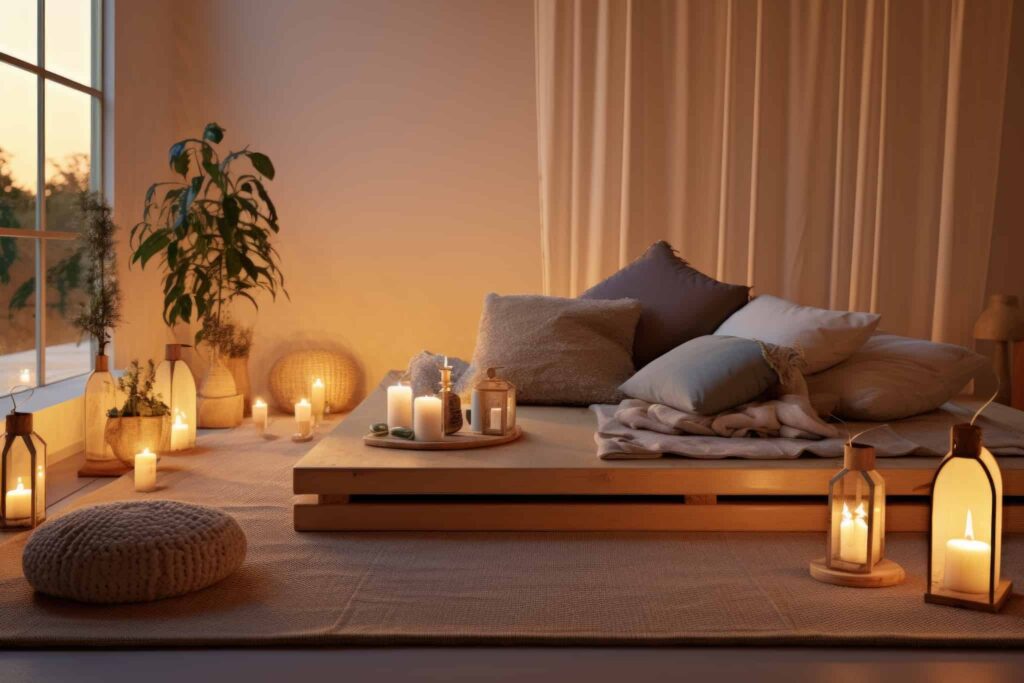
Consider the height and firmness of your seating. If you’re sitting on a cushion, make sure it’s high enough to support your hips and knees. If you’re sitting in a chair, choose one with good lumbar support.
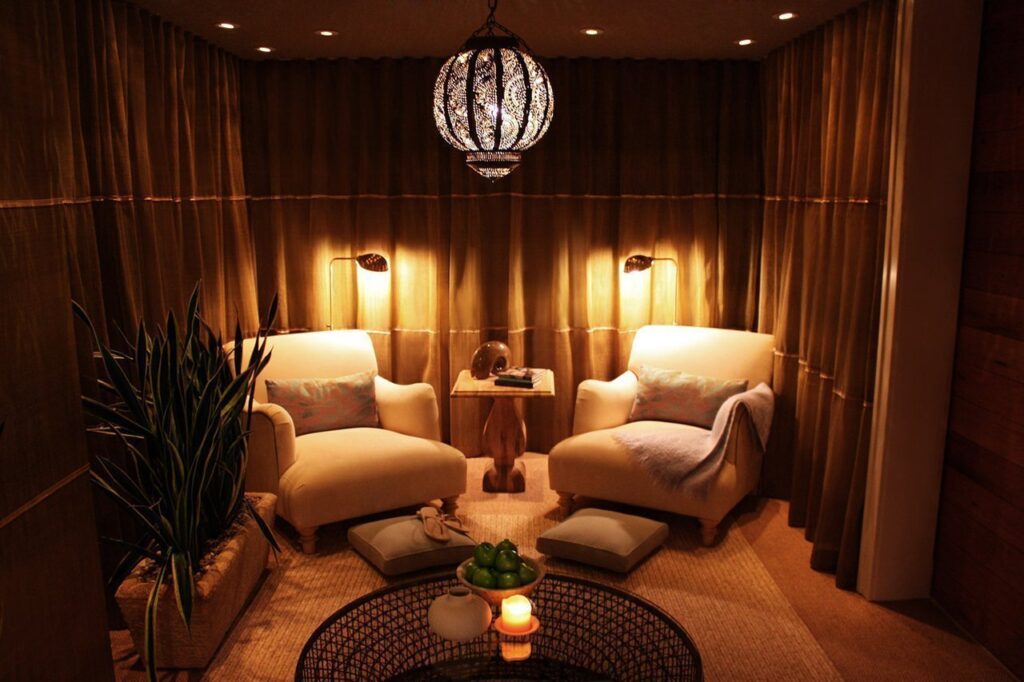
Don’t be afraid to invest in quality seating. A comfortable meditation cushion or chair can make a significant difference in your overall experience.
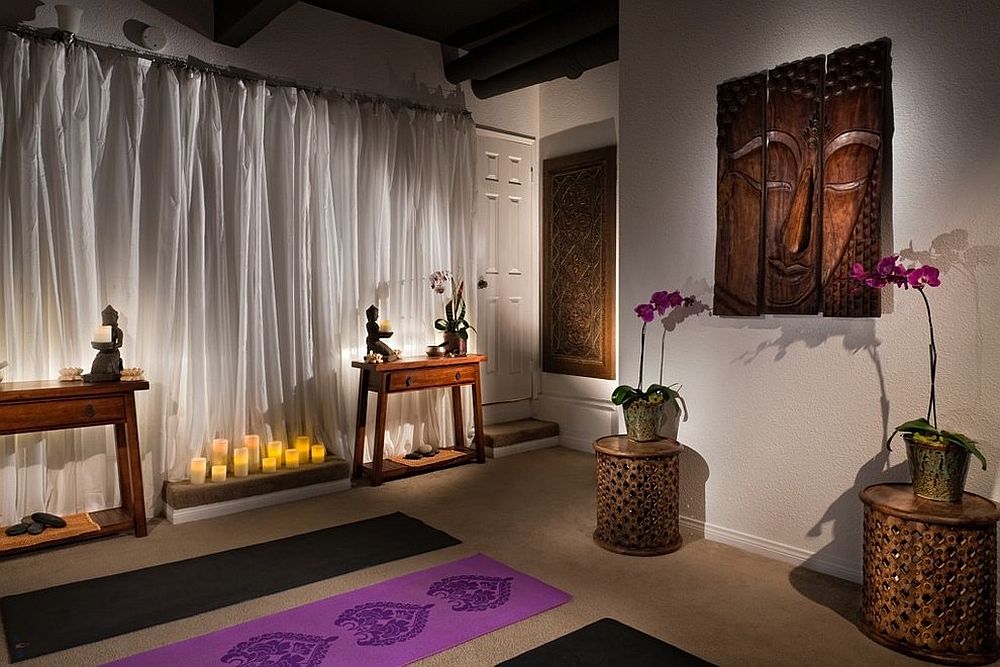
Step 4: Incorporate Calming Colors and Textures
The colors and textures in your meditation space can have a profound impact on your mood and energy levels. Opt for calming and soothing colors like blues, greens, purples, and earth tones. These colors are known to promote relaxation and reduce stress.
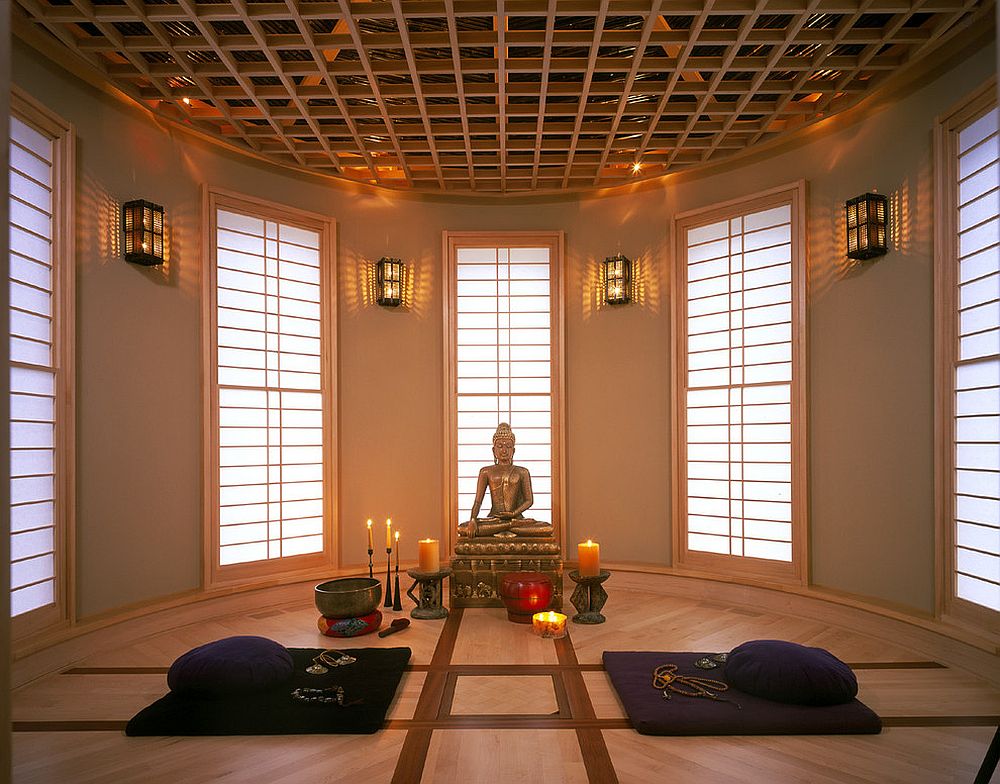
Avoid bright, stimulating colors like reds and oranges, as they can be distracting and overwhelming. Instead, focus on creating a harmonious and balanced color palette.
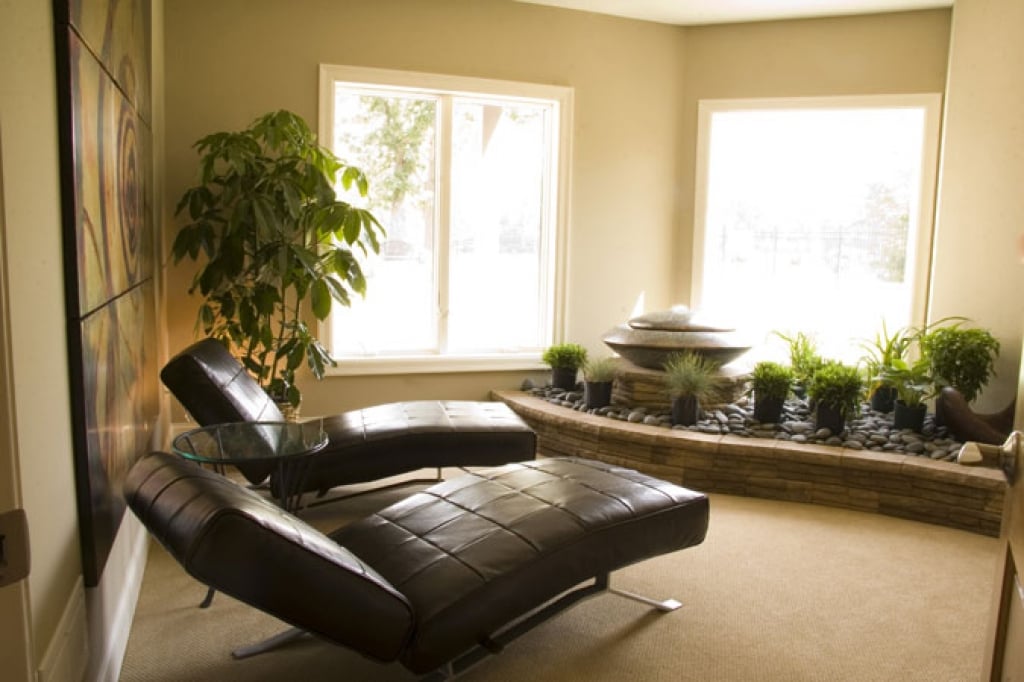
Incorporate natural textures like wood, stone, and cotton to add warmth and depth to your space. These textures can help to create a more grounded and connected feeling.
Consider adding soft textiles like blankets, pillows, and rugs to enhance the comfort and coziness of your meditation area. These elements can make your space feel more inviting and relaxing.
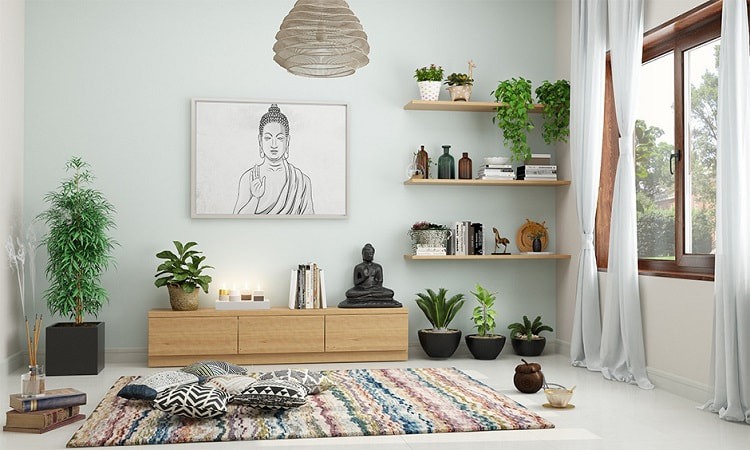
Step 5: Add Natural Elements
Bringing natural elements into your meditation space can help to create a sense of peace and tranquility. Plants, flowers, and natural light can all have a positive impact on your mood and well-being.
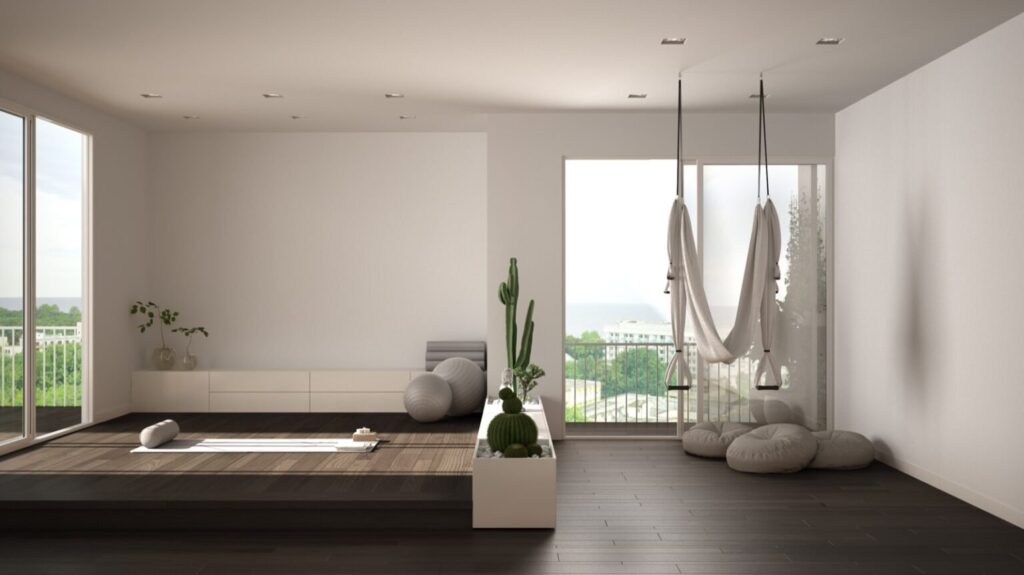
Consider adding a few potted plants to your meditation area. Choose plants that are known for their air-purifying properties, such as snake plants, spider plants, or peace lilies. These plants can help to improve the air quality in your living room and create a more refreshing atmosphere.
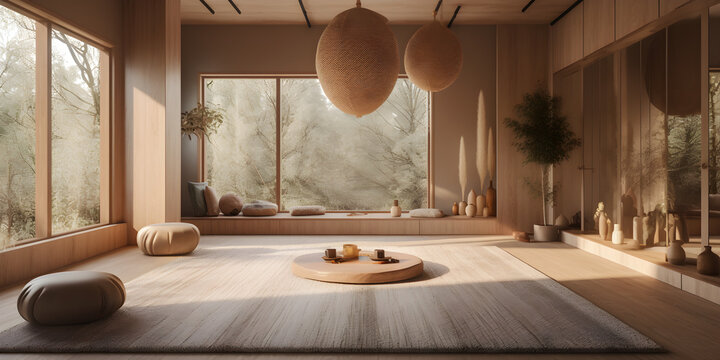
If possible, position your meditation space near a window to take advantage of natural light. Natural light can help to boost your mood and energy levels. However, if you’re sensitive to sunlight, you might prefer to use sheer curtains or blinds to filter the light.
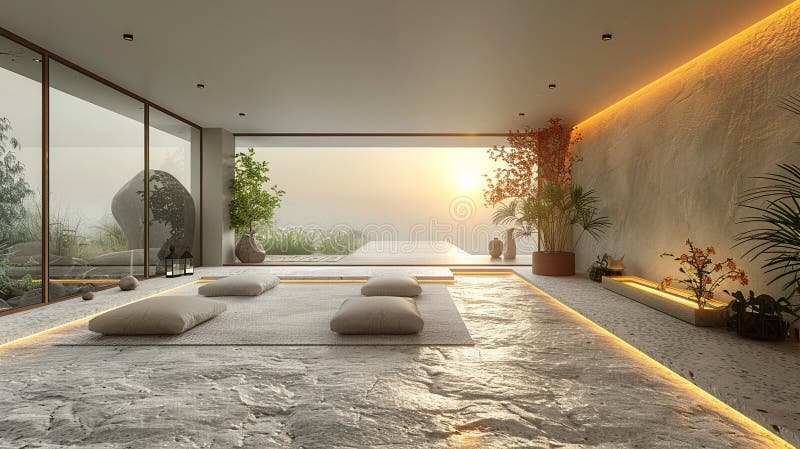
Consider adding a small water fountain or a bowl of water with floating flowers to create a soothing and calming soundscape. The sound of water can be incredibly relaxing and can help to drown out distracting noises.
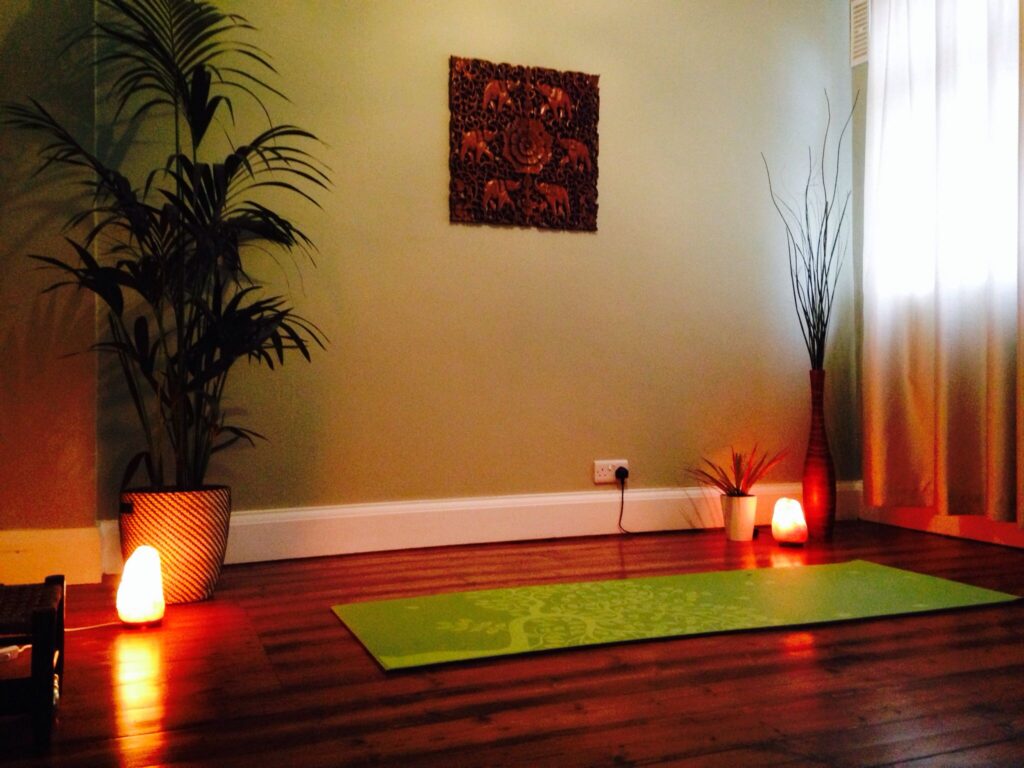
Step 6: Incorporate Sensory Elements
Engage your senses to create a more immersive and relaxing meditation experience. Use aromatherapy, sound, and touch to enhance the ambiance of your meditation space.
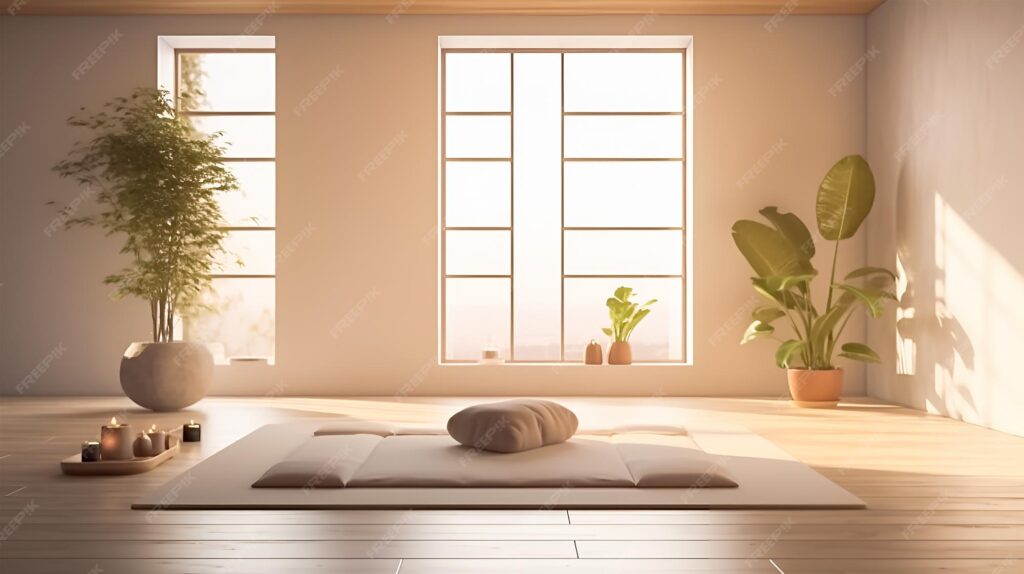
Aromatherapy: Use essential oil diffusers, scented candles, or incense to create a calming and grounding aroma. Lavender, chamomile, sandalwood, and frankincense are all excellent choices for meditation. Make sure to choose natural and non-toxic scents to avoid any harmful chemicals.
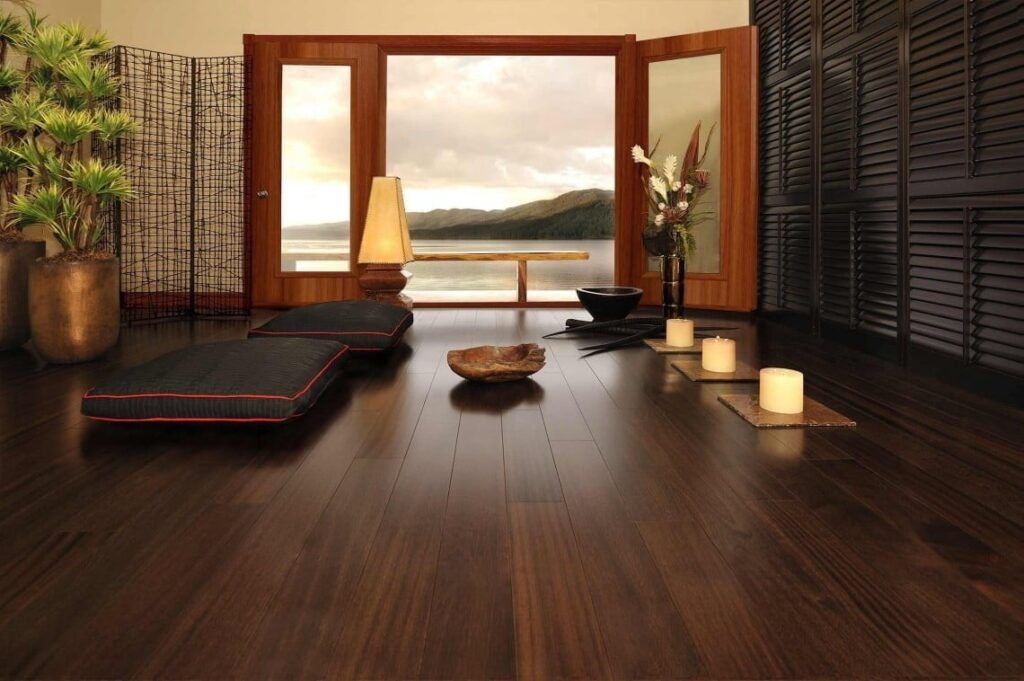
Sound: Play calming music, nature sounds, or guided meditations to help you focus and relax. You can use headphones or a small speaker to create a more immersive experience. Tibetan singing bowls are also a popular choice for meditation, as their resonant tones can help to quiet the mind.
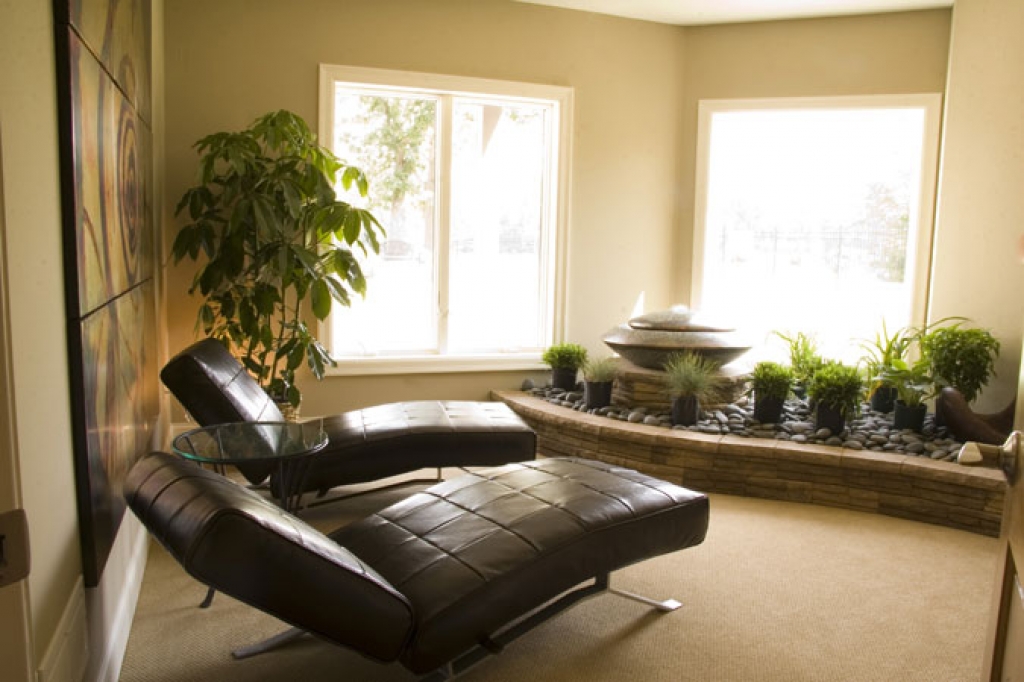
Touch: Use soft and comfortable fabrics like cotton, linen, or silk to create a pleasant tactile experience. A weighted blanket can be incredibly soothing and can help to reduce anxiety. You can also use a mala (prayer beads) to help you focus your attention during meditation.
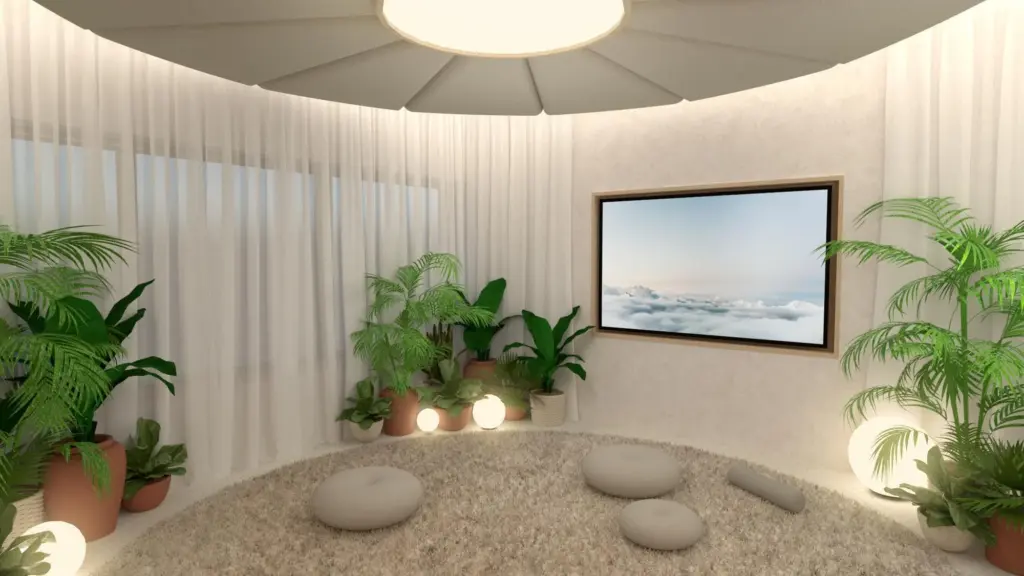
Step 7: Minimize Distractions
One of the biggest challenges of meditating in your living room is minimizing distractions. Family members, pets, and electronic devices can all interrupt your meditation practice. Take steps to minimize these distractions as much as possible.
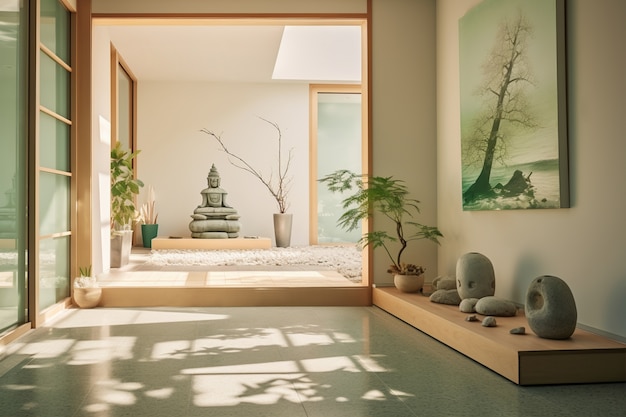
Inform Your Family: Let your family members know that you’re meditating and that you need some quiet time. Ask them to avoid interrupting you unless it’s an emergency.
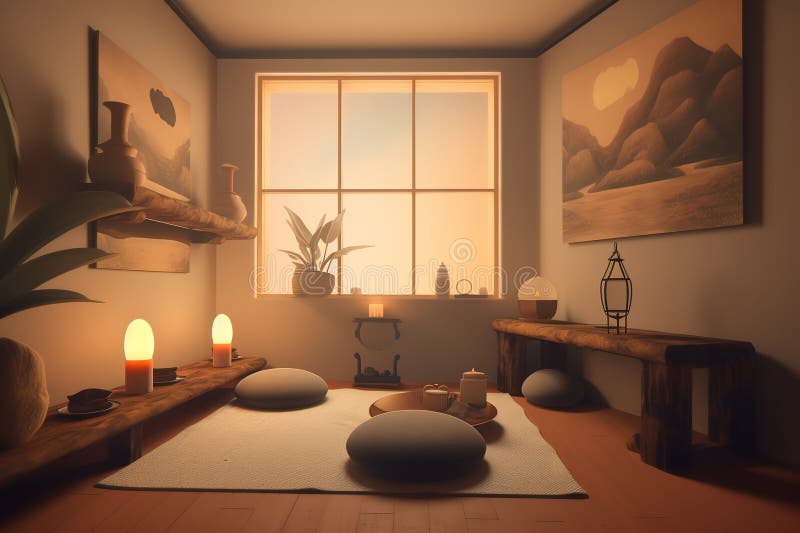
Pet-Proof Your Space: If you have pets, make sure they’re occupied or contained during your meditation time. You can give them a toy, put them in another room, or simply train them to stay out of your meditation space.
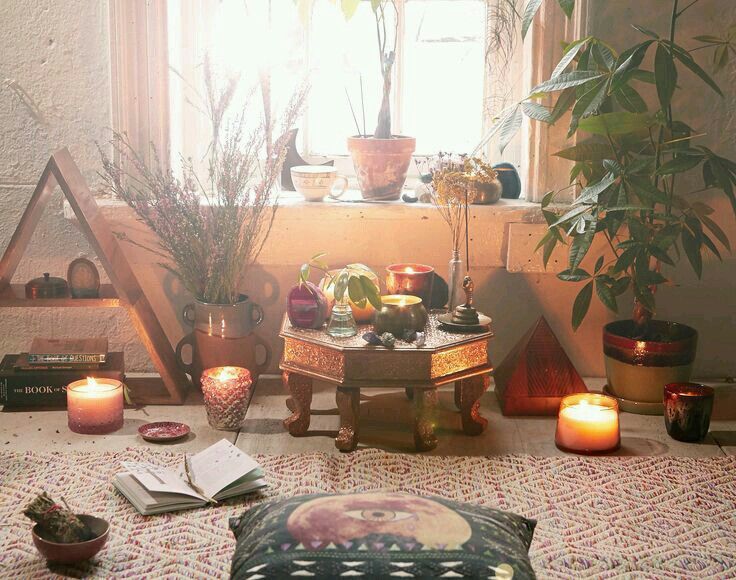
Turn Off Electronics: Turn off your phone, television, and other electronic devices to avoid being distracted by notifications or other interruptions. If you’re using a device to play music or guided meditations, put it on airplane mode to block out any incoming calls or messages.
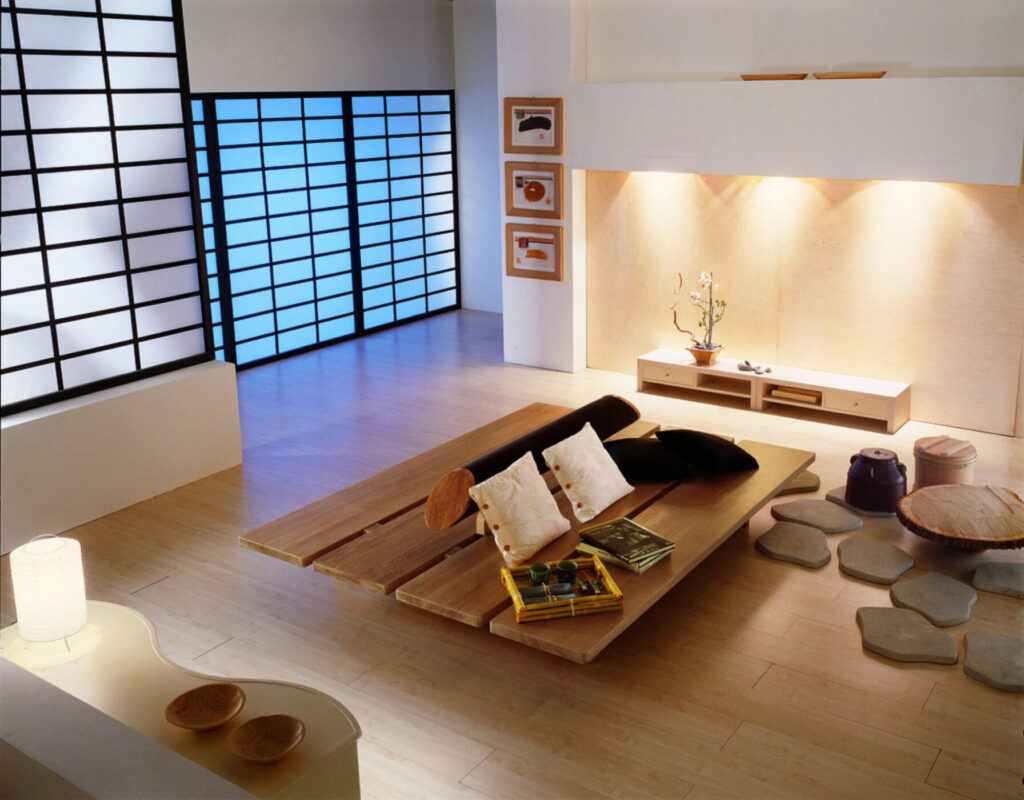
Use Noise-Canceling Headphones: If you live in a noisy environment, consider using noise-canceling headphones to block out external sounds. This can help you to focus more easily on your meditation practice.
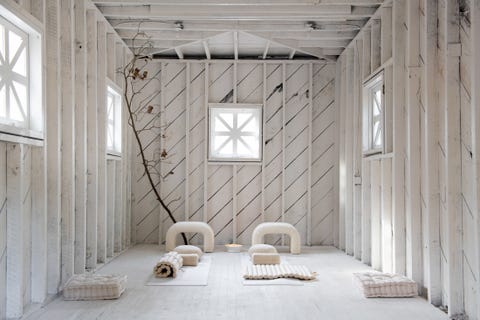
Step 8: Personalize Your Space
Finally, personalize your meditation space to make it your own. Add items that are meaningful to you and that inspire a sense of peace and tranquility. This might include:
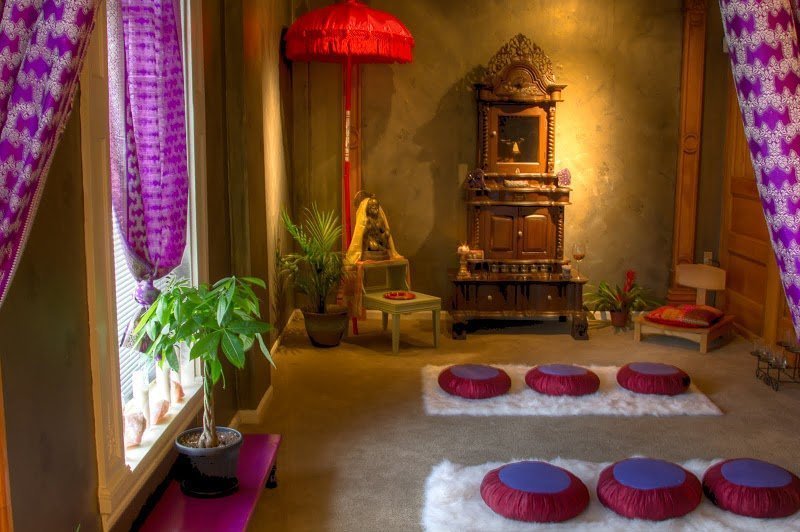
- Inspirational Quotes: Display your favorite inspirational quotes or affirmations to keep you motivated and focused.
- Artwork: Choose artwork that resonates with you and that promotes a sense of calm and serenity.
- Religious or Spiritual Items: Add religious or spiritual items that are meaningful to you, such as a statue of Buddha, a rosary, or a menorah.
- Personal Mementos: Display personal mementos that bring you joy and remind you of positive experiences.
The goal is to create a space that reflects your personality and that inspires you to connect with your inner self.
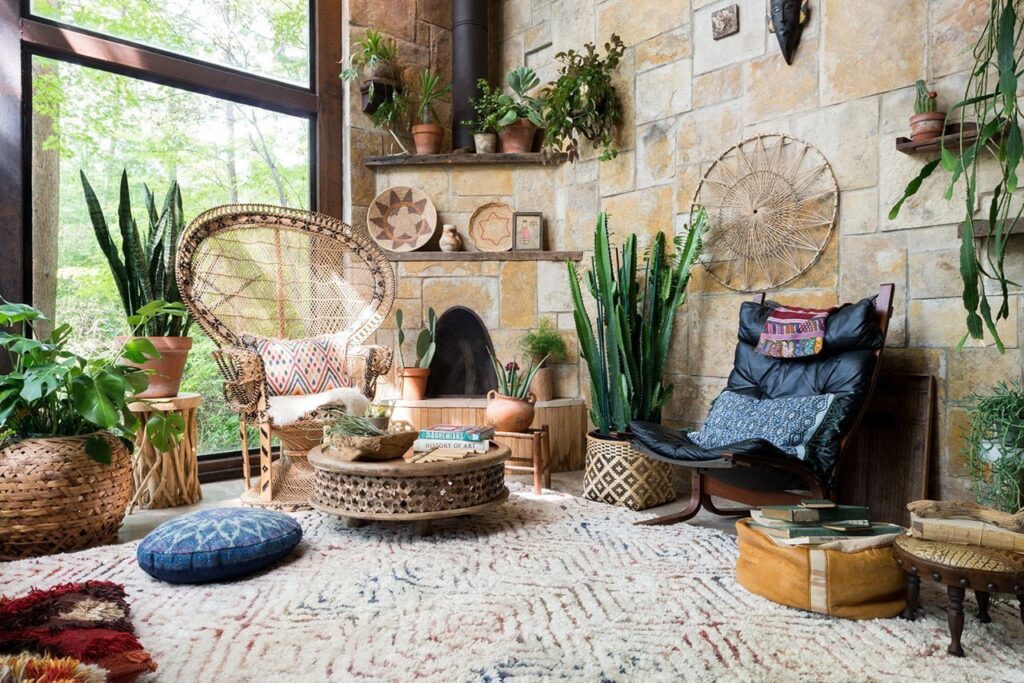
Maintaining Your Meditation Space
Creating a meditation space is just the first step. To reap the full benefits, it’s important to maintain your space regularly. This includes:
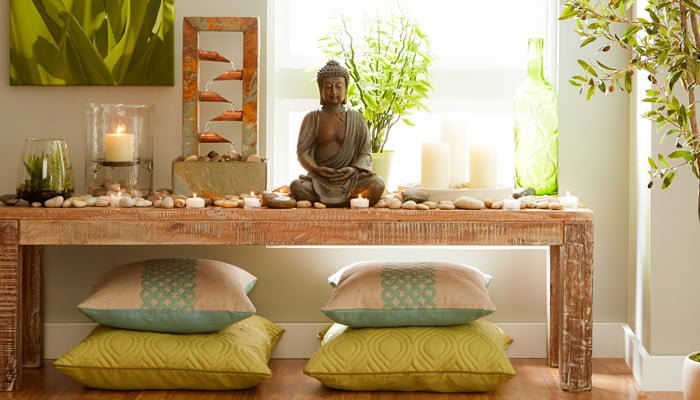
- Regular Cleaning: Keep your meditation space clean and tidy. Dust, vacuum, and wipe down surfaces regularly to maintain a sense of freshness and order.
- Re-Decluttering: Periodically re-evaluate your space and declutter any items that you no longer need or that are no longer serving you.
- Refreshing Your Decor: Occasionally refresh your decor to keep your space feeling fresh and inspiring. This might include adding new plants, changing the colors of your textiles, or rearranging your furniture.
- Mindful Use: Be mindful of how you use your meditation space. Avoid using it for other activities, such as working or watching television. This will help to preserve its calming and peaceful atmosphere.
Making Meditation a Habit
Creating a beautiful meditation space is only half the battle. The real challenge is making meditation a regular habit. Here are a few tips to help you integrate meditation into your daily routine:
- Schedule Time: Schedule a specific time each day for meditation. This will help you to prioritize it and make it a non-negotiable part of your routine.
- Start Small: Start with just a few minutes of meditation each day and gradually increase the duration as you become more comfortable.
- Be Consistent: Consistency is key. Even if you only have a few minutes to spare, try to meditate every day, even if it’s just for a few minutes.
- Be Patient: It takes time and practice to develop a consistent meditation practice. Don’t get discouraged if you find it difficult at first. Just keep practicing, and you will eventually find your rhythm.
- Use Guided Meditations: If you’re new to meditation, guided meditations can be a helpful way to get started. There are many free guided meditations available online or through meditation apps.
- Find a Meditation Buddy: Find a friend or family member who is also interested in meditation and support each other in your practice.
Conclusion
Transforming your living room into a calm meditation space is an investment in your well-being. By creating a dedicated sanctuary for relaxation and reflection, you can reduce stress, improve your mood, and enhance your overall quality of life. Remember, it’s not about creating a perfect space, but about creating a space that supports your journey towards inner peace and mindfulness. So, take the first step today and begin transforming your living room into a haven of tranquility.
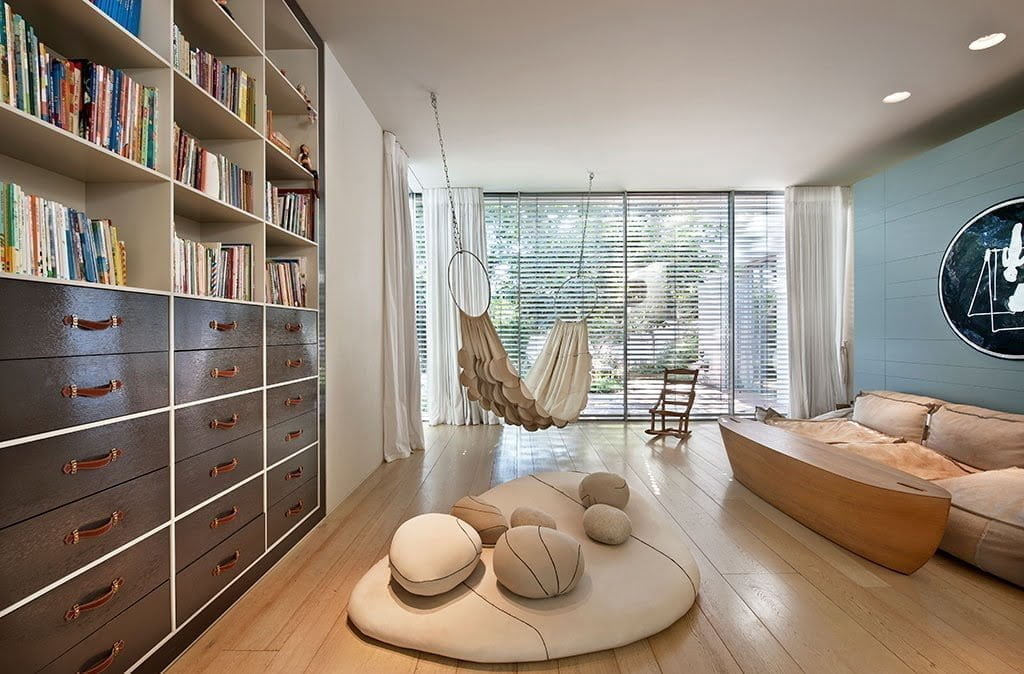
 Nimila
Nimila
